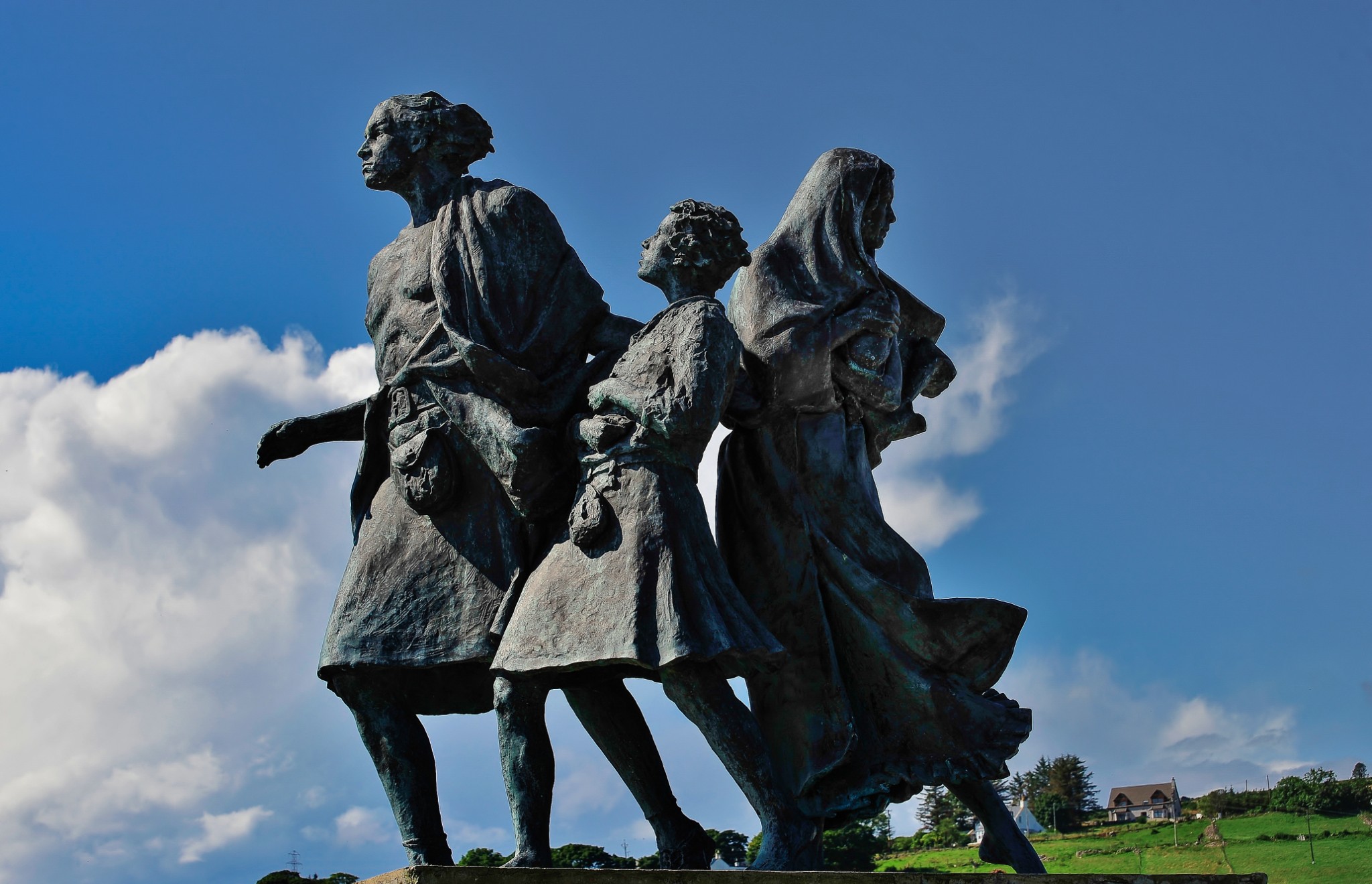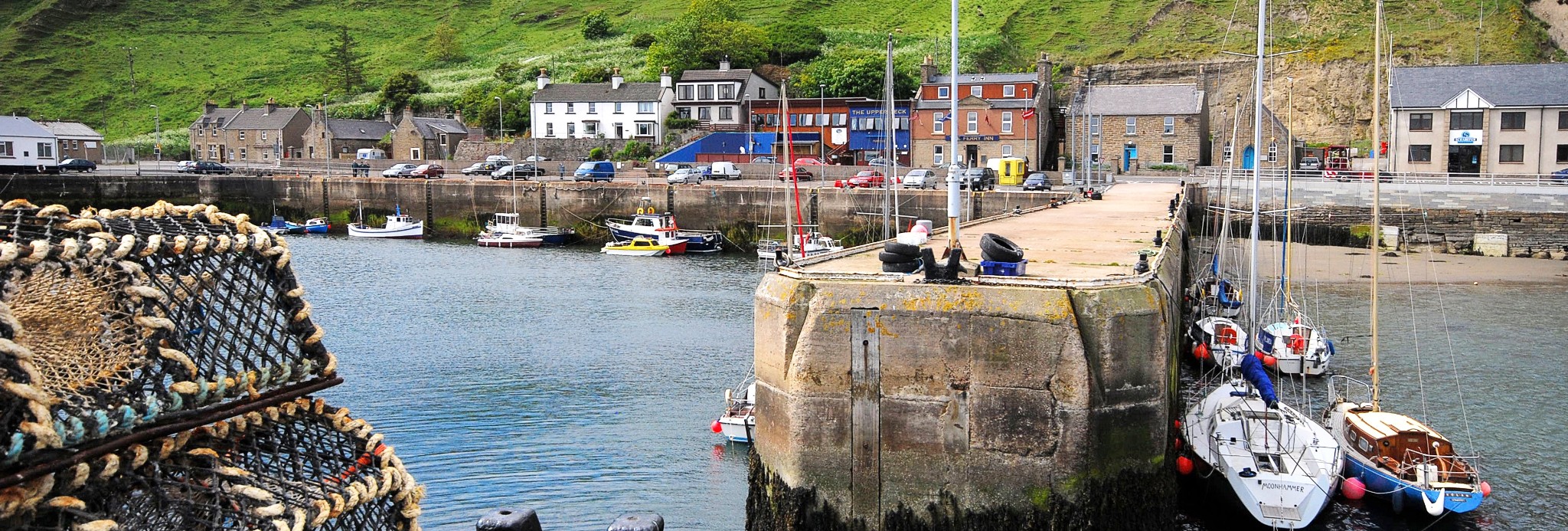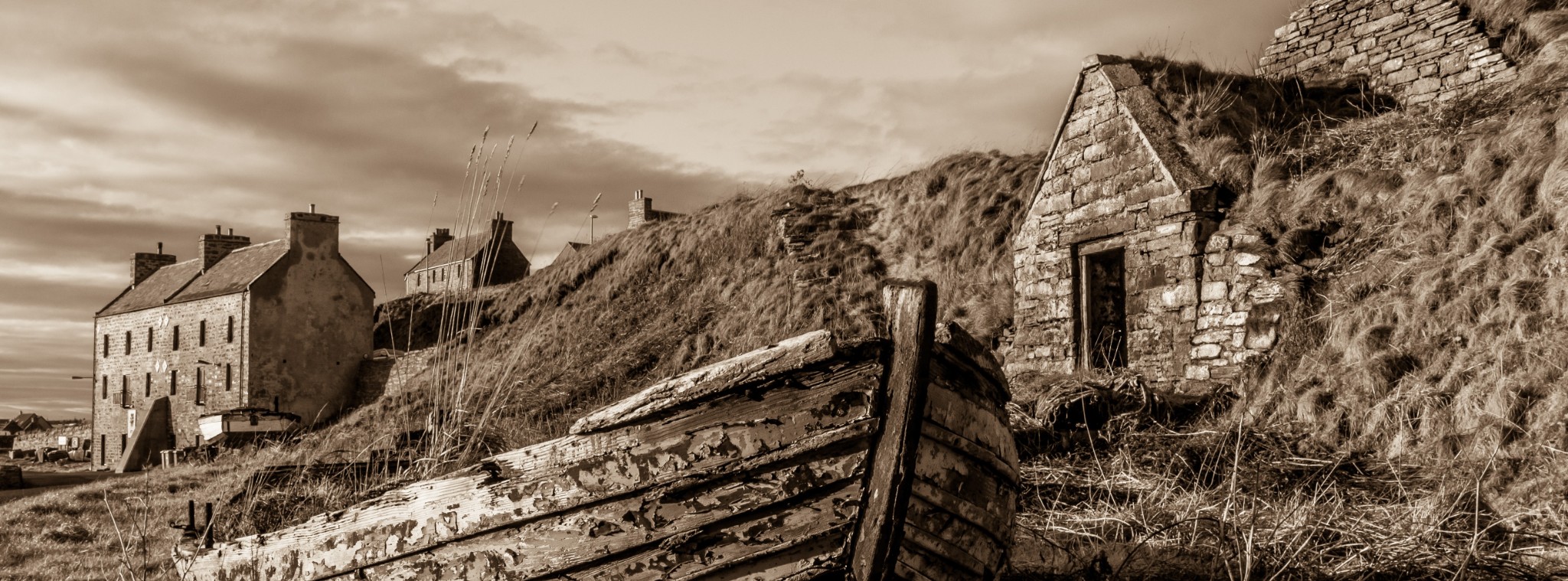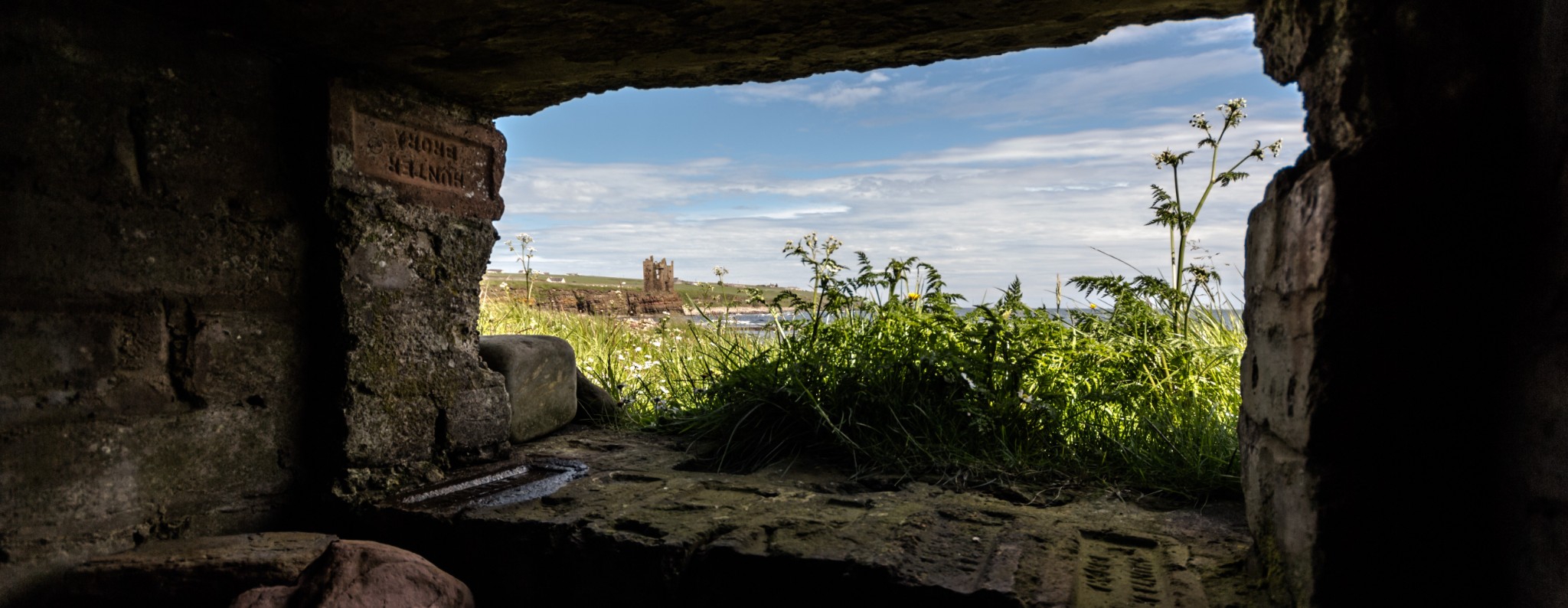Enjoy our collection of stories and tales from across Caithness and Sutherland as we celebrate the Year of Stories 2022.
Be sure to check back throughout the year as more stories are added and please tell us if we are missing any of your favourites.
You can view these stories by geographical location on our Tales and Legends map.
TALES, MYTHS and LEGENDS
HISTORY and BATTLES
Blue Men of the Minch
To cross the Minch is to risk the wrath of these mythological beings, also known as Storm Kelpies, who seek to drown sailors and sink ships. Only your Captain's wits can save you all by completing a poetry verse called out by the Blue Men as a challenge.
Deer in Celtic Mythology
In Celtic myth and religion the stag symbolised the power of the Other World, a realm of the dead and the Gods, as well as the vitality of the forest and untamed nature. As the antlers of the stag fall and regrow so does the cycle of life and death in nature continue.
Kelpies
Wide-spread across Scotland is the knowledge that deep water holds even deeper secrets and not to trust a lone mysterious horse wandering the banks. The mythological kelpie is always waiting for unwary children and travellers to sit upon its back so it can plunge into the waters and drown its passengers.
Legend of the White Stag
This mythical creature is a symbol of the hunt for wisdom, but it ever eludes its hunters, always staying one step ahead and leading pursuers deeper into the forest. To chase the white stag may bring omens for good or ill and often signaled a great change in the life of the warriors who saw it.
Mirrie Dancers
When the sky turns green and dances before your eyes you know the Mirrie Dancers have come to play. One of the most incredible natural phenomenon in the world, the Northern Lights are an unforgettable experience for those lucky enough to experience them.
Selkies
Stories of the seal people are common right across Scotland and have captured the imagination for generations. Beneath the waves are a beautiful people who wear the skins of seals and elude land-folk who seek to hold them. But if a selkie loses their seal-skin they can never return to the waters where their hearts belong.
Haunted Carbisdale Castle
Throughout its life a stately home for a disgraced Duchess of Sutherland, refuge for the King of Norway and a youth hostel. This ever-changing castle has one constant through the years, mysterious hauntings ranging from old warriors from battle, a lady in white, children's spectral voices and a phantom piper.
Hauntings at Dunrobin Castle
A daughter killed by her father in a desperate attempt to escape with her love. A mysterious apparition of a man, phantom footsteps stalking the gift shop and plaintive sobbing from one of the rooms; this is a castle with many ghosts and tales.
The Ghosts of Ardvreck Castle
The ruins of Ardvreck Castle on the shores of Loch Assynt are a treasure trove of stories, including several ghostly figures who have spooky tales to tell. A spiteful old woman who's soul belongs to a spirit of the loch and a sobbing young woman in white who's father tried to wed her to the Devil.
The Green Lady of the Castle of Mey
Desperately in love with a servant far below her station, Lady Fanny Sinclair's story was to end in tragedy at the bottom of a tower and now her spectral presence haunts the Castle of Mey in the form of the Green Lady.
The Lady in White at Skibo Castle
A local girl reportedly disappeared and the ghost of a lady in white came to haunt the famous Skibo Castle near Bonar Bridge before its time as the Carnegie Club. Was she killed by the steward and did the supposed human remains found during renovations belong to her?
The Sailor of Sandwood Bay
A mysterious sailor appears among the dunes and disappears again, leaving no footsteps and no clues to his identity. Perhaps he was an unfortunate soul lost in one of the many shipwrecks in the area before the the construction of the Cape Wrath Lighthouse in 1828.
Bucholie Pirate Castle
Local legend has it that Svein Aliefson, a notorious Norse pirate and robber, once built a fortress at the site of the present day Bucholie Castle on the east coast of Caithness. He famously makes a daring escape down a cliffside by rope during an attack but nothing more is known of what happened to the fortress.
Clootie and the Rocks of Chaos
Deprived of his promised bride (see Mermaid of Assynt) Clootie, the Scottish word for Devil, was furious and summoned rocks from Chaos to crash down upon the landscape in an attempt to destroy the Macleods and Inchnadamph. This resulted in the unique geological features that we see today and are protected in the North West Highlands Geopark UNESCO World Heritage Site.
Gruesome Imprisonment at Castle Sinclair Girnigoe
This spectacular ruined castle on the east coast of Caithness was once the site of the gruesome imprisonment of John Sinclair, by his father the 4th Earl of Caithness, in 1577. After 7 years of incarceration his father gave him nothing but salted beef and he eventually died insane of thirst.
Mermaid at Sandwood Bay
Over one hundred years ago a crofter named Alexander Gunn was looking for his sheep in the cleft of a rock and stumbled across a red-headed mermaid of incredible beauty. Till the day of his death in 1944 he remained convinced of his sighting and the truth of the mermaid of Sandwood Bay.
Mermaid of Assynt
A man desperate to build his castle at any cost, even that of his daughter's hand in marriage to the Devil. But when she discovers the scheme she throws herself into the waters of Loch Assynt rather than facing such a fate and becomes the Weeping Mermaid of Loch Assynt.
The Fight of Two Brothers
How did Assynt get its name? The truth is that there were once two brothers: Unt, meaning 'Man of Peace' and Ass-unt, meaning 'Man of Discord' and one day these two brothers had a fight. At the end of this fight Ass-Unt was left standing as the victor and so the region gained its name.
Last Wolf in Sutherland
A lone marker is the only evidence left to show the spot where the last wolf in Sutherland was said to have been killed in 1700. Once a fierce natural predator of the Highlands, farming, hunting and growing populations made it impossible for the species to continue.
The Unknown
The Unknown is a 7.8ft tall skeletal iron sculpture designed by Kenny Hunter and unveiled in 2012. It stands remote in Borgie Glen in the north of Sutherland and is inspired by the character of 'outcasts' in local folklore and tales, such as ghosts, monsters, shape-shifters and giants.
Brora Coalfield
Brora mine was the only Jurassic coal mine in Scotland and provided vital industry and jobs for those in the area. There are stories of people collecting coal from the shorelines for centuries but the modern shafts were dug between 1811-14.
Carbisdale Castle's Missing Clockface
When the Dowager Duchess of Sutherland built herself a castle outside of Sutherland lands, after a long and drawn out ugly family feud involving her prison sentence, she was so determined to spite the family that she refused to even give them the time of day.
Dunbeath Harbour
Nestled in a small inlet on the east coast of Caithness, Dunbeath Harbour has provided safe haven for fisherfolk for generations as well as being a beautiful picturesque spot. On a fine day you wouldn't believe there could be any danger but when the waves rise you can imagine how much the harbour was appreciated.
History of John O'Groats
Do you know the story of how John O'Groats got its name? What is the significance of the eight-sided buildings in the area? Do you know the history of the ferry, the ice house and the famous sign post?
Island of Stroma
The small island of Stroma was inhabited until 1962 when the last few crofters felt that life there was no longer tenable and decided to leave for the mainland. Many descendants and old inhabitants of the island remember it fondly and have recorded their memories.
Island Roan
Eilean nan Ròn means 'Island of the Seals' and this tiny island lies just off the north coast of Sutherland. It was inhabited until 1938 at which point life on the island was no longer viable and the last few remaining inhabitants left for the mainland.
John O'Groats Ferry
The story of how a small ferry run by a local scientist became a 50 year legacy with over a million passengers. Hear from owner Frederick Fermor as he tells the story of the history of the John O'Groats Ferry.
John O'Groats Mill
This was the last water-powered grain mill to be built in Scotland and up until 2001 was a working mill, 50 years later than any other in Caithness. Now in development under the John O'Groats Mill Trust an exciting future awaits for it.
Mary Ann's Cottage
A true time-capsule of Highland crofting history in the far north of Caithness at Dunnet. This unique cottage has been left just as the last resident, Mary-Ann, kept it until she was 93. The life of a crofter was a hard one but simple, following the turn of the seasons and growing their food.
Noss Head Lighthouse Keeper
They stand now as silent bright sentinels on the coast but lighthouses all around Scotland used to be hives of activity as teams of men battled the darkness and the elements to keep the light burning.
Shipwreck of SS Onega
The tragic shipwreck of the SS Onega on December 20th 1862 led to the deaths of all onboard and the water ran bright with the phosphorescence leaching from their lifejackets and clothes. Since then that area of Eilean nan Ron has been known as Mol na Coinnle, Bay of the Candles.
Smuggling and Illegal Distilling in Caithness
The remote landscape, fresh water and many natural cliffs and caves, excellent hiding spots, meant that Caithness was a great spot for illegal distillers and smugglers. Despite the dangers of the coastline there were many small boats capable of navigating the natural harbours and willing to run the risk of capture.
Whaligoe Steps
330 steps down near sheer cliffside to a small harbour, but in the heyday of the herring boom this was the site of over 20 boats all fishing for the 'silver darlings'. Herring landed here would have to be salted, packed and then carried up all the steps and miles to the nearest local markets or harbours to be transported across Europe.
Bombings at Wick
1940 was a painful year for the town of Wick which suffered two aerial bombings less than four months apart; the bombing of Bank Row on the 1st July and the bombing of Hill Avenue on the 26th October. The victims of both bombings are remembered at the Bank Row memorial garden.
Camp 165 Watten
In the remote landscape of the north was a prisoner of war camp numbered 165 at Watten. Thousands of POW's were held here in the three years following World War 2, with some being repatriated to their home countries and others being brought before the Nuremburg Trials.
Chain Home Radar Station
The site of this former radar station at Loth has a large number of surviving buildings and infrastructure. It was part of the ring of Early Warning radar stations constructed during World War II, codenamed Chain Home.
Duke of Kent Air Crash 1942
Alone on a remote hillside in Caithness sits a memorial to the Duke of Kent who perished, along with the crew, when his piloted aircraft crashed in 1942. It marked the first time in 450 years that a member of the British Royal Family had died while in active service.
Loch Eriboll Bombing Practice
This picturesque Highland loch was once the site of repeated bombing practice as the allied forces prepared for Operation Tungsten. The largest island on the loch, Eilean Choraidh, was used as a representation of the battleship Tirpitz. The loch was also the site of the end of the Battle of the Atlantic with the formal surrender of the surviving 33 German U-boats.
Operation Freshman
Operation Freshman launched from Skitten, near Wick, in November 1942 in an attempt to disable the German's heavy water research programme and disrupt the development of a Nazi atomic bomb. The raid ultimately led to the loss of 41 Allied soldiers.
Battle of Littleferry
After the events of the Melvich shipwreck and skirmish at Tongue the loyalty of William Sutherland, 17th Earl of Sutherland, was in question and the Earl of Cromartie sent 500 men against him. The force stormed Dunrobin Castle and the battle continued right along the shoreline to Littleferry, just days before the battle of Culloden.
Melvich Shipwreck and Gold in Lochan Hakel
On the 25th March 1746 a French ship carrying £13,000 in gold for the Jacobite cause was chased by a British frigate and run aground at the Kyle of Tongue. After an escape from the ship the crew reportedly hid some of the gold in Lochan Hakel before they were captured and the rest of it taken.
Photos on this page by Wendy Sutherland, Angus Mackay, Annemarie Dunnet.





